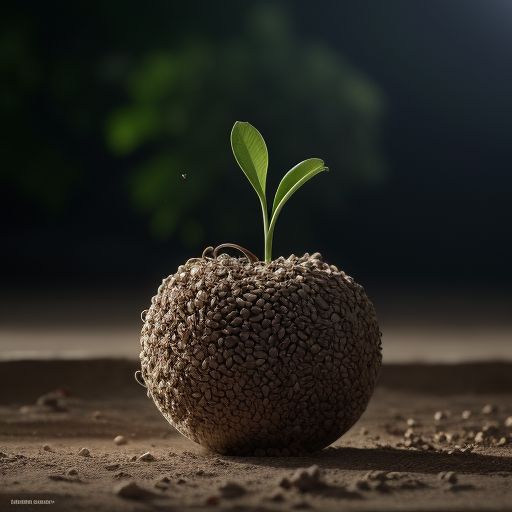The question of when life begins has captivated scientists, theologians, legal scholars, and philosophers for centuries. Defining the “start of life” requires examining primary sources—original materials created contemporaneously with the events or ideas they describe—across disciplines. These sources include experimental data, religious scriptures, legal documents, and biological studies. By synthesizing insights from developmental biology, theology, and jurisprudence, this report explores how primary sources inform our understanding of human embryogenesis.
One take-away from researching the primary sources is that where objective science is the source, life begins at conception, supporting the Judeo-Christian Scriptures, whereas subjective judicial and philosophical sources are much more likely to define life as starting some time after conception. Our belief is that the subjective nature of judicial, political and philosophical endeavors is much more likely to be driven by a selfish agenda disconnected from evidence.
Scientific Primary Sources on the Origin of Life
Biological Primary Sources on Human Life’s Beginning
Embryological Studies
Developmental biology relies on microscopic observations and experimental data as primary sources. The fusion of sperm and oocyte, documented in studies such as those in Molecular Human Reproduction, marks the formation of a zygote—a single-cell organism with a unique human genome 1,14. Time-lapse imaging of in vitro fertilization (IVF) procedures, published in journals like Nature, visually corroborates the zygote’s capacity for self-directed cleavage and differentiation 11. These primary sources underpin the consensus among biologists that human life begins at fertilization, as articulated in amicus briefs submitted to the U.S. Supreme Court 8,11.
Genetic and Epigenetic Analyses
Primary sources in genetics include studies tracking gene expression patterns from the zygotic stage onward. Research in Cell demonstrates that embryonic genome activation occurs as early as the two-cell stage in humans, disproving earlier claims that maternal RNA solely directs initial development 11. Epigenetic studies, such as those in Nature Genetics, reveal that DNA methylation patterns established at fertilization guide tissue specialization, further affirming the zygote’s status as a distinct organism 4.
Legal and Jurisprudential Primary Sources
Judicial Opinions and Legal Briefs
Landmark court cases serve as primary sources for legal definitions of life’s onset. In Roe v. Wade (1973), the U.S. Supreme Court cited fetal viability as a threshold for state interest in protecting life, a stance critiqued in subsequent amicus briefs by biologists arguing that life begins at fertilization 8. The 2021 Supreme Court brief Dobbs v. Jackson Women’s Health Organ
ization included testimony from 58 developmental biologists reiterating the fertilization consensus, making this document a pivotal primary source in ongoing legal debates 8,11.
Legislative Texts
Statutory definitions of life vary globally. For example, Germany’s Embryo Protection Act (1990) legally recognizes embryos as human beings from the moment of conception, a policy informed by biological primary sources 11. Conversely, U.S. federal guidelines, such as the NIH Revitalization Act (1993), avoid defining life’s beginning, reflecting the interplay of scientific and political primary sources in policymaking 8.
Theological and Philosophical Primary Sources
Religious Scriptures
The Bible serves as a primary source for theological perspectives, with passages such as Jeremiah 1:5 (“Before I formed you in the womb I knew you”) interpreted as affirming life’s sanctity from conception 2, 5.
Ethical Treatises
Philosophical works like Thomas Aquinas’ Summa Theologica engage with Aristotelian theories of ensoulment, while contemporary bioethicists like Peter Singer critique personhood criteria in primary sources such as Practical Ethics. These texts debate whether consciousness, autonomy, or genetic uniqueness define life’s moral inception 4,11.
Defining life’s start necessitates interdisciplinary dialogue grounded in primary sources. Genomic data, and embryological studies converge on fertilization as life’s biological inception, while subjective legal and theological documents reflect societal valuations of personhood. Unfortunately, the legal and political arena decide how people can dispose of organisms they deem to be pre life. Whereas they wouldn’t argue against the scientific evidence of gravity, their personal agendas allow them to ignore the science of life’s beginning.
Citations:
- https://news.uchicago.edu/explainer/origin-life-earth-explained
- https://www.christian.org.uk/wp-content/uploads/when-does-human-life-begin.pdf
- https://pmc.ncbi.nlm.nih.gov/articles/PMC7151616/
- https://pmc.ncbi.nlm.nih.gov/articles/PMC7245522/
- https://www.focusonthefamily.com/pro-life/pre-born/science-vs-bible-when-does-life-begin/
- https://evolution.berkeley.edu/from-soup-to-cells-the-origin-of-life/studying-the-origin-of-life/
- https://www.prattlibrary.org/research/guides/primary-sources-throughout-history
- https://www.supremecourt.gov/DocketPDF/19/19-1392/185346/20210729162737297_19-1392%20BRIEF%20OF%20BIOLOGISTS%20AS%20AMICI%20CURIAE%20IN%20SUPPORT%20OF%20NEITHER%20PARTY.pdf
- https://www.nsf.gov/news/new-models-shed-light-lifes-origin
- https://ask.loc.gov/faq/303148
- https://issuesinlawandmedicine.com/wp-content/uploads/2023/09/Jacobs_36n2.pdf
- https://royalsocietypublishing.org/doi/10.1098/rsta.2016.0337
- https://huntington.org/educators/learning-resources/spotlight/activity-create-primary-source
- https://guides.lib.wayne.edu/PrimarySources
- https://guides.nyu.edu/primary/primary-sources/primary-sources
- https://www.turnitin.com/blog/what-is-a-primary-source
- https://libanswers.uwinnipeg.ca/faq/156323
- https://library.shu.edu/primarysources
- https://umb.libguides.com/PrimarySources/secondary
- https://www.loc.gov/programs/teachers/getting-started-with-primary-sources/
- https://www.library.unsw.edu.au/using-the-library/information-resources/primary-and-secondary-sources
- https://libguides.luc.edu/history/primary_sources
- https://libguides.apsu.edu/primary_sources
- https://crk.umn.edu/library/primary-secondary-and-tertiary-sources
- https://siarchives.si.edu/history/featured-topics/stories/what-primary-source
- https://library.lafayette.edu/services-help/help/primary-sources/primary-sources-what-are-they/
- https://library.albany.edu/infolit/resource/primary
- https://thinkport.org/grr/learn-it.html
- https://www.epm.org/resources/2010/Jan/29/when-does-life-begin-according-your-study-scriptur/
- https://www.liebertpub.com/doi/10.1089/ast.2015.1113
- https://acpeds.org/position-statements/when-human-life-begins
- https://www.americanscientist.org/article/the-origin-of-life
- https://papers.ssrn.com/sol3/papers.cfm?abstract_id=3211703
- https://bioprinciples.biosci.gatech.edu/module-1-evolution/origin-of-life/


